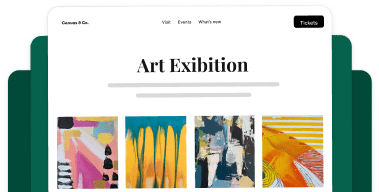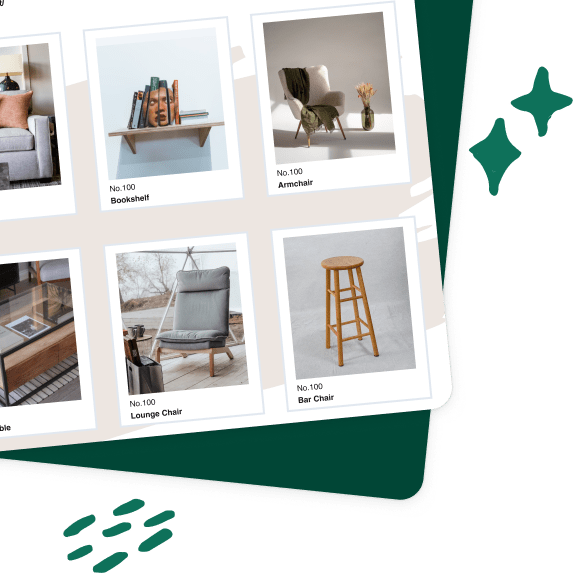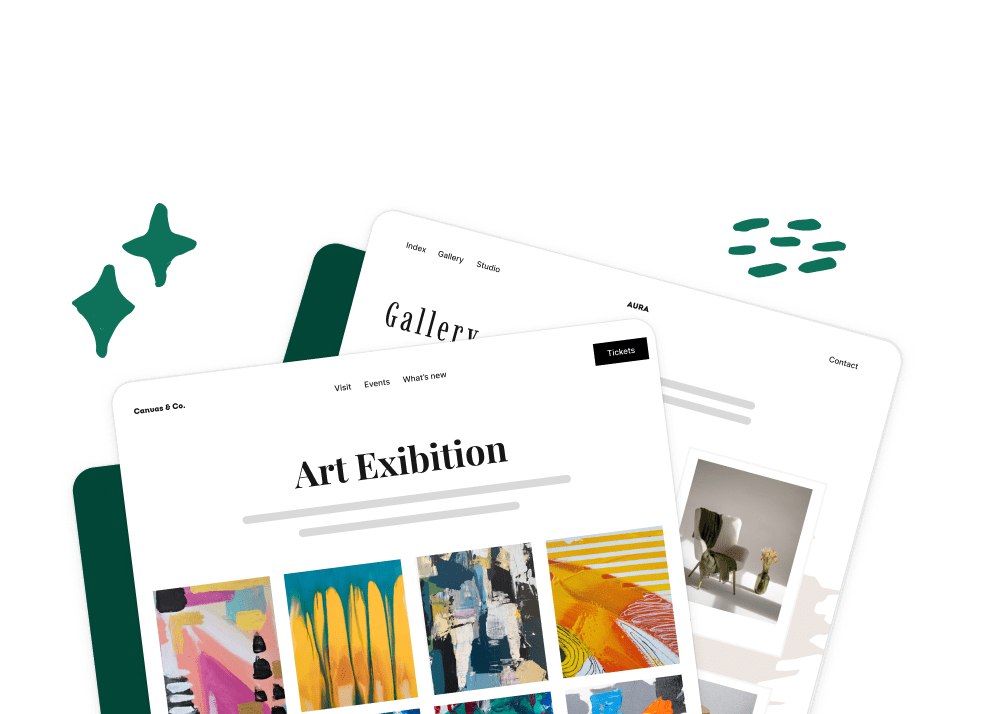Looking to improve your travel photography? With the right mindset, equipment, and skills, you can share your journey with loved ones at home. Photography is about telling stories, and in this post you’ll learn 11 powerful tips to share the story of your travels.
I’m Chris, the lead developer on Envira Gallery. I also happen to be a photographer.
Unlike most of our photography tips and tutorials here, this one is a bit more personal.
The tips below are NOT generic travel photo tips – they’re about how photography can help you to experience the world around you, and share those experiences with others.
About My Journey
As lead developer, I keep Envira Gallery users in mind with everything I do. But I don’t often get to interact directly with you.
After my recent journey, though, I decided that I wanted to tell the story of how I came to travel and photography.
Here’s a little of my story…
On a trip to a local farmer’s market, I had a chance conversation with a local photographer. I’d always been interested in photography, but after that conversation I walked away with my mind set on my goals.
I realized that I wanted to share the world through my eyes to whoever would see – to share stories, emotions, and experiences. It’s inspired me to travel and experience more of life.
Recently, I came to the realization that I’d forgotten that moment, and my real motivation for getting into photography. I realized it was time for more personal growth.
Which led me to plan this trip…
In what I call my ‘southwest trip,’ I planned to explore the sights of Death Valley, Yosemite, Zion, the Great Sand Dunes, and more.
I’d be traveling whether I was a photographer or not, but with these photos I can share the impact of my journey with others.
Here are a few of the lessons I’ve learned along the way (plus a complete gallery for you at the end).
1. Enjoy the Journey
Not every photo needs to be of a tourist attraction or famous destination. Why not stop just for mountains and stars?
Remember photos don’t always have to be taken. Sometimes just enjoy the experience of where you are.
2. Slow Down and Notice the Little Things
When I was at Petrified Forest National park, I was walking around enjoying the warmer weather. I started to look at all the petrified wood. There were so many beautiful textures and colors, I decided to grab my macro lens.
I could have spent the whole day just admiring all the little things.
3. Look Up
I used to never notice the little things, but now I like to refer to something called “looking up” – taking my time and really experiencing life as it happens.
You know I’ve noticed one trend on this trip: everyone’s in a rush.
Photographers go to the internet guide points, snapping a photo then moving to the next point on the list. Same with families and couples who take the traditional selfie and move on.
I’ve rarely seen anyone just relax and look up.
You know, I’ve shot at some of those guide areas – they’re beautiful, so why not?
I want people who look at my portfolio to come to these places, stand where I and many others have. But I don’t want you to rush from point to point so you can say you’ve done it.
This was shot near the starting point of Kayenta Trail. I hiked to the turnaround which is the Emerald Pools.
Again, I saw many people had tunnel vision, just going from point A to B.
After I set up my gear I noticed people slowing down a bit by me, stopping and seeing what I was shooting. Heard a few people mention that it was a beautiful view.
I’m glad my presence, as insignificant as it was, slowed a few people down.
The photo above was taken as I was hiking deeper in the Mesquite Flat Dunes, then turned and saw the light shadows. I dropped the tripod and took a quick shot before moving to where I wanted.
It pays to keep your eyes open and notice your surroundings – you never know when the perfect shot will appear before you.
4. Stop and Listen
I do love big landscapes – something about the mountain air, listening to the world go by, the photos always produce a “wow” factor.
Honestly though? Standing on a rocky coast on a cloudy day, with your eyes closed and your heart open just listening to Mother Nature work is one of the most refreshing and relaxing things to do.
5. Don’t Wait on Perfect Weather
Clear blue skies and warm weather are beautiful, but there’s also beauty in rain, snow, and cloudy days. Don’t be afraid to venture out into the cold to avoid the crowds and grab a perfect shot.
It was tough to get photos of the Great Sand Dunes National Park because of wind. Taking the photo above, I mentally wasn’t prepared for cold.
But I was lucky enough to get some clear skies and slightly less wind to do some star trails of the park. I ran it until I couldn’t feel my fingers – definitely worth it.
The photo above is shot over a car bridge by the visitor center. It’s an amazing view, but there was almost no one in the park because of rain and snow.
6. Patience Is a Virtue
You know, Mother Nature doesn’t always play nice… but sometimes you can wait her out.
I was hoping for an amazing sunset at Zabriskie Point, but the clouds stuck around.
As I watched everyone walk away, I decided to wait until just after twilight to grab an unique shot of this point.
Patience is a virtue, and it’s something I’m glad I’ve learned. I’m granted these shots because I’m no longer moving 1000 miles an hour.
7. Venture off the Beaten Path
The photo above, of the Mesquite Flat Dunes, was a few miles hike round trip. I really felt this one the next day!
Up and down dunes with a big pack is was a little rough, throw in the wind and some sand rash, but hey – totally worth the view.
My feet were wet, my bag was heavy. My heart is open and my mind is blown.
I walked about a mile in the water to get the view all around me. Most people were looking at me like I was crazy. A few curious ones asked if it was worth it.
The photo above was taken just around Nautical End. I knew the clouds were rolling in so I wouldn’t get many stars in the shot.
Most everything is shut down this time of year, and there’s lots of mud and ice on the trails that are open, so it’s not a very popular destination.
8. Be Prepared
It pays to be adventurous, but make sure you know what you’re in for first.
While this is an awesome shot and standing at the top of the half mile hike was a blast, the rest of the night was interesting, to say the least.
I was heading down the trail and I hear two people yelling.
I looked around, but didn’t see anyone – so I yelled back.
Apparently two people got lost hiking just before sunset and were stuck on a cliff!
So I jumped in my car, called 911, and got a hold of the ranger station and headed back to camp.
About an hour later a ranger stopped by my camp site and asked if I’d go up with him. I got to literally crawl up the side of a mountain to help find them. Eventually the ranger had to rope down the lost hikers on harnesses.
Please – whether you’re new or experienced at hiking, always take a trail map, and always carry some safety gear. Flashlights, headlamps, water and food, even on small hikes during the day. If you can, carry a GPS locator with you.
9. Don’t Rely Too Much on Tech
Speaking of being prepared… the best GPS in the world won’t help you if there’s no service.
After I got up into Yosemite, I had no GPS service and got lost.
Thanks to having paper maps, I found my way.
That night I took the photo above – one of those shots that’s been on my bucket list for a while. The famous photographer Ansel Adams stood in this same spot. I’d be curious to see what he’d be able to do with today’s tech.
10. Leave No Trace
One thing worth remembering on any journey is to…
Take only memories,
Leave only footprints,
Kill nothing but time.
11. It’s About the Experience
On this night I was just hanging out up at Zabriskie Point laying out on my backpack. I knew from the cloud formations there would be a solid sunset, so I was just passing the time people watching.
I saw this young couple walk up with cameras in hand just looking as passionate as can be. It reminded me of when I first picked up my camera. This couple took their snaps and started to leave before the color show I knew was coming.
So I turned and said “Hey, you should hang around for a bit.” They ended up coming back up while the colors were in full.
We ended up chatting for bit – they were students from Canada on break just traveling. They both happened to be interested in astrophotography, so I gave them some tips and then they were on their way.
It’s a good reminder why I love doing this – it’s not about the photos; it’s the process, it’s the experience, it’s the 5 minute conversations I have with strangers that make my heart full.
I happen to be a photographer, but the photographs aren’t for me, they’re for you. To inspire, to find an emotional connection to a place you’ve never seen or been.
Make a journey to have that experience, not just for the photos. To stand on a cliff edge and look up, see the stars on a clear night, to hopefully feel what I do everytime I’m somewhere magnificent.

















































Great story – we went to that area many years ago in the days before digital and I’d love to go back, especially to Bryce Canyon- keep up the great photography and the tips! PS are you on Instagram?
Hey Steve,
Thank you. Bryce is beautiful, unfortunately while I was there it had a ton of ice pack on the trails so I didn’t explore it as much as I wanted too. I’ll be back toward that area later in the year to explore some of the slot canyons nearby. My instagram is @lostinintrospection https://www.instagram.com/lostinintrospection/
Cheers, Chris
Hi Chris,
Love your story and your journey and agree its about seeing and feeling and becoming a part of what you photograph. I’m travelling a similar route June to August this year and have allowed the extra time to experience and feel the beauty of nature. Being able to tune in to the energy all about you certainly helps you appreciate what Mother Nature has to offer and record it in your memories both as a photograph and as an experience.
I’m a landscape photographer from beautiful New Zealand and see, feel and experience nature in a similar way.
Yosemite, Death Valley, Page, Antelope Canyon, Grand Canyon, Monument Valley, Moab, and Arches National Park is our planned route but are by passing the cities to experience our time in this great part of your country and record it in Envira Gallery.
Hey Bryan,
Thank you, I stopped in many of those ares some I didn’t take a ton of photos at. I was just enjoying the views. The map posted is the actual route I traveled, the planned one had a few of those ares on it. I skipped out Monument Valley because depending on the area a license is required to use photos from the lands commercially and I couldn’t find a ton of information how to get one while there. The timeframe you’ll be there remember to bring a bit extra water it will be extremely hot in some of those areas, part of the reasoning for heading there this time a year was weather. New Zealand is on my bucket list, its such a beautiful part of this world, I want to wait until I have time to fully explore it.
Cheers, Chris
Beautiful photographs and very helpful ideas for all folks who travel with a camera. As a travel photographer and an Envira gallery user, I appreciate that not everything in blog is technical. However, I do have a technical question. What are the settings for the gallery display at the bottom of the post? I like the way it looks and would like to use it on my website. Thanks.
Hey James,
First thank you :-D. The settings are pretty close to the default for our Pro – Automatic Layout with a 150px row height and fill for the last row. Lightbox theme is base dark
Cheers, Chris
Hi Chris,
Great article and photos. It was very nice visiting with you at Death Valley.
I am now using Envira Gallery – fantastic.
Regards, Tim (kc & John Michael)
Hey Tim,
That’s awesome to here :-D, let me know if you ever have any questions with it. Hope you guys had a safe drive home.
Cheers, Chris
Hi Chris, these are some great shots. Thanks for sharing. Would love to see another blog post with some of your favorite photo gear.
Hey Alex,
Thank you, I think we’re going to try getting some gear related posts out. I know before I head off to my next journey I’m going to doc things a bit better. I currently shoot with a A7rii and have a A7ii as my backup. Lenses will vary but all are primes from 18mm-200mm, Ill end up swapping a few of my primes for zoom because of weight, they’re awesome but not so ideal for hiking.
Cheers, Chris
hello chris,
thanks for your story and for these fotos!
and yes, ” photos don’t always have to be taken. Sometimes just enjoy the experience of where you are”.
but beside this, thanks to all the people taking fotos and sharing them!
so I do, too.
see my site “www.fs-fotodesign.de” (in german),
some of your fotos seem to me a bit “too hevy in colour” – but anyway:
fantastic landscapes!
thanks for it, and regards from north-germany,
all the best,
friedhelm
Hey Friedhelm,
Thank you.
Cheers, Chris
Hi Chris,
Thanks for the inspiration and information! Your photos are heart-stirring.
My interest in photography blossomed during an amazing trip to India in 2012…I loved it there. While there, I decided “the life for me” would be travel photography…..I loved the “everyday India” sights of people doing typical tasks but so different than life here in the US.
I so appreciate this post and your guidance!